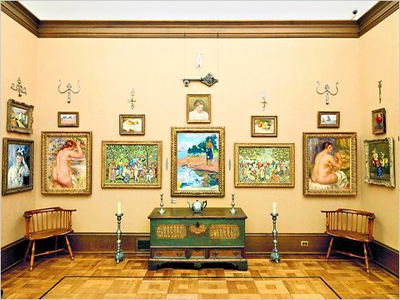
Friday, August 24, 2012
Tuesday, August 14, 2012
The Barnes Museum: Hubris, Agony and Matisse
So last weekend I made a quick trip to Philadelphia to visit Jo Feb and marvel at the size and comfort of her Doylestown farm house apartment. When you live in the downtown area of a city, sometimes you can forget that something more than 300 square feet exists as actual living space. For more on the improvement work Jo Feb has done to her place, check out our earlier posts.
On the way back, I ran into some trouble at the bus station. Which was unusual (said no one ever) and I had to take a later one. Fortunately, this allowed for a walk with some friends to the new Barnes museum. I should be clear that in this analysis, we did not actually go in, as it was past 6:00 pm on a Sunday. Therefore I will limit thoughts and observations to the exterior.
Many moons ago, when I was actually a pottery major at St. Joseph's University and looked roughly like this:
I had been to the original Barnes to help a friend escape from the French Club that she had conned for a free trip from Chestertown, MD to Philadelphia. I have to be honest, it was not love at first sight.
The original Barnes had been set in a back area of a quiet neighborhood known as 'Lower Merion' in the suburbs of Philadelphia, near the intersection of the affluent 'Main Line' and the nice, but not as fancy 'City Ave'. It was not particularly easy to find, and the force was strong with the Neighborhood Association, meaning that there were strict rules for buses, tourists, loitering, etc. in the general area. Additionally tickets had to be bought in advance and were not always easy to obtain.
The first time around, something seemed so, I'm not sure... miserly, I guess about the whole transaction. As if they were doing me some great favor, that I should be down on my hackie-sack playing, save-the-whale-protesting, cafeteria-cake-stealing knees, thanking them for the opportunity to take what little money I had.
I think part of this was the natural snobbery which comes from being a college freshman, especially an art major. Additionally, let's be honest, in those days my number one concern was where you could get a cheese-steak at 2 in the morning.
Then, a little while later, my parents visited me at school and we went back. The second time around, I stopped being offended by the process and actually looked at the art and the space which enclosed it.
It. was. phenomenal. It was clearly the work of someone who not only had an eye for a particular style, but an eye for excellence and eclecticism within that style. Someone who loved and guarded their collection with pride and ferocity.
I would have classified it as the love child of the Villa Borghese in Rome and the Walters in Baltimore. From the Borgheses, it gets the privacy, privilege and clarity, from the Walters it gets the excellence in detail, the overwhelming size of the collection and the sense of self-accomplishment. It was tucked away, a solitary as an oyster but a gem to be discovered. I didn't understand that the first time: that you didn't get to just 'have' the collection, you had to earn it.
"The Barnes Foundation is the only sane place to see art in America" - Henri Matisse
Many have debated whether this is actually true or not. For my part, once I got over my sense of naive moral outrage, the gallery was nothing if not logical...and beautiful for that matter.
So if this gallery was SO GREAT, why move it at all? There in lies one of the most intriguing political questions in the world of art and architecture today. Similar to Sex, Politics and Religion, it seems the Barnes is not a topic you bring up at a cocktail party if you want to be polite (that is if Momma raised you right). Everyone has a differing opinion and if you want to look at it from a balanced perspective, neither side is totally wrong.
On the one side there are the believers that this fabulous collection was going to waste in a neighborhood that didn't appreciate it. They already have so much, good schools, beautiful homes, money: Why take this too? Plus all they do is complain about people coming to see it, you think they'd be happy to see it go. This collection should be seen by the whole world, not some uppity suburbanites.
On the other hand, you have those who wanted it to stay in Merion because it was not only a deeply rooted part of the culture, the pride of the area, but
also the will of the man who had bought the collection with his own
hard-earned money. Why should the intent of his will be stripped away by a bunch of money grubbing bureaucrats who only care about profiting from the art? They don't love the paintings, they love the prestige.
There's also the famous question of what the intent of Dr. Barnes actually was: did he really want to create a quality experience that had to be earned, or was he just trying to stick it to the snobs at the Philadelphia Museum of Art who looked down at him and his 'new money' ways?
You see the problem here.
This debate spawned two, really interesting media works. One was a play called 'Permanent Collection' by Thomas Gibbons. Read more about that here.
The play touched not only on the political aspect, but also on how the topic of race may have had its hand in the cookie jar as well. The Morris Museum that is discussed in the play is a thinly veiled Barnes with Sterling North as a convincingly torn Richard H. Glanton, the former president of the foundation.
The other piece is 'The Art of the Steal', now streaming on Netflix.
In the end, the city of Philadelphia won. The Barnes was moved to center city and the design of the new Barnes Foundation was under the care of the architectural duo of Billie Tsien and Tod Williams.
There's no way to win this fight if you're the architect who is asked to design such a building. What do you do? Whatever you design, at least 50% of the viewers are going to hate it based on the fact that it's been (in their opinion) stripped from its rightful home.
The only people who could truly understand the predicament would either be Jorn Utzon (now deceased...also, check out the story behind the Sydney Opera House, riveting) or those who have to deal with the Elgin Marbles. (British Museum vs. Bernard Tschumi. New Acropolis Museum, look it up.)
But nevertheless they took the commission. See below for their concept:
Like the original Barnes building, I didn't love this one right away. I saw the parti in the paper and thought 'Oh God, here we go: another pressed flat panel almost-like-but-not-quite-as-good-as-the-Getty design." But I was wrong.
In walking the exterior you see what Billie and Tod are up to. They want to make a garden in the city: something like but not quite the Lower Merion location. Let's be honest: it's not...yet.
Eventually the trees will grow in and the area will retreat back from the street, maybe by then the controversy will have relaxed. Perhaps, perhaps, perhaps.
Walking into the area, there is something to be said for the attention to detail. You can see that each aspect is considered, from the ramps onto the grassy areas to the finishes and the materiality, everything is deeply, deeply thought through. There is also the strong attention paid to the entry path. Like the original Merion design, they want you to earn the art. Walking up slowly makes you feel as if you're seeing somthing special. It's a ceremony, an honor.
However, on the other end, there's the big light sandwich that flirts with the parkway. Drawing you closer, seducing the viewer, making it something just out of reach.
This firm clearly knew what they were doing.
BT and TW couldn't just go rogue with any wild design, but neither could they submit entirely to the original Merion structure, it just wasn't big enough. Plus, what person wants to just copy the same thing over again? William Levitt
I had the opportunity one time of hearing Billie Tsien speak at Penn about architecture, specifically the firms previous work at the Folk Art Museum in New York. The lecture was thought provoking: particularly her views on the accessibility of education, which I won't paraphrase here for lack of a better memory. However, what I gathered from that lecture, is that everything about their work is considered as a piece of the whole concept. The anti-decorated shed approach.
To their credit, when I saw the Folk Art museum I thought they had made the most beautiful fire exit I had ever seen.
Now it is time for New Barnes pictures.
The new Barnes will never be the original Barnes. That's true. Whether or not the location of the institution is suitable, fair or even legal is a matter of debate. Was the original Barnes building beautiful? Yes. Is the new one beautiful? Yes.
Tuesday, August 7, 2012
IDP - Experience Reportiong [the Follow-Up]
This post is a response or follow-up to my "conundrum" as described in this post.
I believe it was last Friday that my supervisor approved my IDP experience reports. This time I opted to stand behind him as he did it so I could witness the experience should I need to report a malfunction or mishap to NCARB again.
As it turned out, when my supervisor followed the link that came up in his email alerting him to the new report needing approval, he logged in and saw BOTH experience reports. I guess the one that was "hidden" or "missing" from last time somehow magically returned? Or perhaps when they were updating the interface/reporting system, the file got lost and has since been restored?
Either way, my supervisor was able to approve both experience reports without a problem. And consequently, I received in my email yesterday a notification that my IDP has been completed! Now just to wrap up those "loose ends...."
I believe it was last Friday that my supervisor approved my IDP experience reports. This time I opted to stand behind him as he did it so I could witness the experience should I need to report a malfunction or mishap to NCARB again.
As it turned out, when my supervisor followed the link that came up in his email alerting him to the new report needing approval, he logged in and saw BOTH experience reports. I guess the one that was "hidden" or "missing" from last time somehow magically returned? Or perhaps when they were updating the interface/reporting system, the file got lost and has since been restored?
Either way, my supervisor was able to approve both experience reports without a problem. And consequently, I received in my email yesterday a notification that my IDP has been completed! Now just to wrap up those "loose ends...."
Subscribe to:
Posts (Atom)















